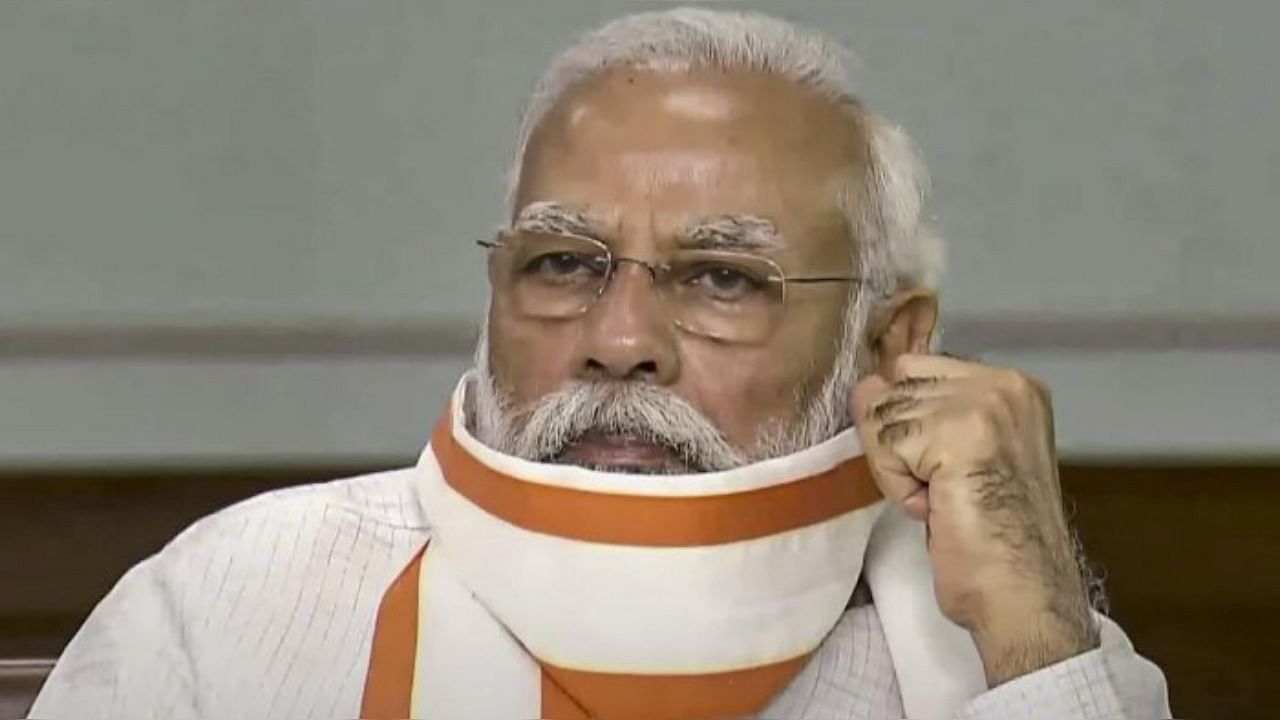
Anniversaries offer us a chance to reflect and reassess. This week marks the seven years of the present government and an assessment is long due.
A defining highlight of the first seven years of Manmohan Singh’s government was the reduction in poverty by 15 percentage points - almost 14 crore people were lifted out of poverty.
The average GDP growth rate was 8.5 per cent (2004-05 series). Inclusive economic growth was accompanied by landmark legislation like the Mahatma Gandhi National Rural Employment Guarantee Ac (MGNREGA), Forest Rights Act, and the Right to Information Act.
What has been the record of the present government?
Narendra Modi inherited from the United Progressive Alliance (UPA) an economy on the ascendancy. Luck favoured the government as international crude oil prices crashed soon after. The July-September quarter of 2016-17 recorded a growth rate of 9.7 per cent, the highest quarterly growth recorded under this government. This was the quarter before the catastrophic demonetisation. The annual growth rate in 2016-17 was 8.3 per cent. It has only fallen since and is estimated to be (-)8 per cent in 2020-21. Demonetisation is not the only culprit. An ill-designed and ill-implemented Goods and Services Tax (GST) regime broke the back of small businesses. An unplanned lockdown and a stingy stimulus contributed to the economic contraction. Below is a tabulation of the growth rate of GDP and other major items for 2013-14, 2019-20, and 2020-21. Even before the pandemic impacted the economy, this government fell short of its predecessor on all fronts.
The low growth of the past seven years has been accompanied by financial profligacy. India’s debt-GDP ratio touched a high of 90 per cent in 2020; this was 67 per cent in 2014. Wholesale inflation in March was at an eight-year high. The economic distress has manifested in the form of job losses and a high unemployment rate. In 2017-18, India recorded its highest unemployment rate in 45 years, increasing from 2.2 per cent in 2011-12 to 6.1 per cent. According to the Centre for Monitoring Indian Economy (CMIE), the unemployment rate was 11 per cent as of May 25. Salaried jobs have been declining since March 2019. Half of the manufacturing jobs have been lost in the last five years. Lack of quality jobs is forcing educated youth to take up menial employment not commensurate with their skills and aspirations.
The past seven years have been witness to India regressing on poverty reduction. A suppressed NSS survey (conducted in 2017-18) showed that consumer spending had fallen for the first time in four decades. People in rural India had resorted to a reduction in food consumption, raising fears of increasing poverty and malnutrition. An analysis of the survey findings estimated an increase in rural poverty by four percentage points. The increase in poverty can also be deduced from the latest National Family Health Survey data. Thirteen of the 22 states for which data is available reported an increase in stunting. It bears mentioning that stunting reduced 10 percentage points between 2005-06 and 2015-16.
The gradual increase in poverty accelerated with the pandemic. Pew Research Centre estimates 7.5 crore Indians fell below the poverty line during the pandemic. The middle class, India’s engine of growth, shrunk by 3.2 crore. The State of Working India 2021 report estimates poverty rate increasing by 15 and 20 percentage points in rural and urban areas respectively.”
Concurrent to the shrinking middle class and rising poverty is the increase in fortunes of the richest Indians. According to one report, Indian billionaires’ worth increased by one-third between 2019 and 2020. The number of India’s dollar billionaires rose from 102 to 140 last year.
Worsening inequality is untenable and unfortunately, the government has had a role to play. In September 2019, the government reduced corporate tax for domestic manufacturers from 30 to 22 per cent, foregoing revenue to the tune of Rs 1.45 lakh crore. Contrast this with how excise on petrol and diesel has been periodically increased and is nearly eight times the rate in 2014. Excise on petrol, diesel, and natural gas constitutes 12 per cent of the total revenue – this was 4.3 per cent in 2013-14.
The decline is not limited to economic indicators. Over the past years, India has fallen on the press freedom index, the democracy index (labelled a ‘flawed democracy’), gender gap index, hunger index, religious freedom index to name a few. Contentious legislation like revoking Article 370, Citizenship Amendment Act have contributed to the democratic backsliding. In seven years, the government has promulgated way more ordinances (76) than what the UPA did in ten years (61).
These seven years have been a story of major setbacks, reverses, and a secular decline across sectors.
It is natural to feel nostalgic around anniversaries. Ruminating of the past may invoke anxieties about the future. The BJP leadership announced that it would not be celebrating the completion of seven years of government. It is a good decision. The party and the government must instead reflect, review, and rectify their mistakes.
(The author is National Coordinator at the Research Department, All India Congress Committee)
Disclaimer: The views expressed above are the author’s own. They do not necessarily reflect the views of DH.